Vermilionville is a living history open air museum in the heart of Lafayette, Louisiana. Bayou Vermilion is the museum’s focal point now, just as it has been for centuries.
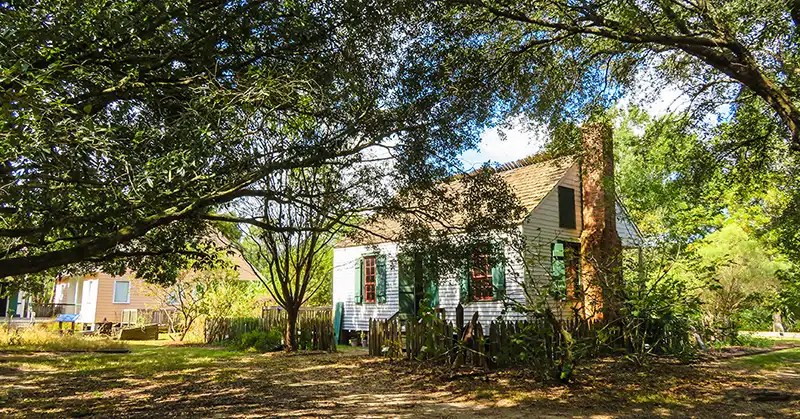
What’s in Vermilionville Living History Museum?
Vermilionville is a scenic 23-acre (9 hectare) open air museum in the Bayou Vermilion District. The village has seven historic homes, all of which are originals or replicas of historic buildings, along with other attractions.
The museum opened in 1990 to promote the cultural resources of the Acadian, Native American, and Creole people. Indeed, each of the historic properties has costumed interpreters ready to tell you about the area’s history.
Fast Fact: Vermilionville Living History Museum is home to La Cuisine de Maman restaurant, which can be visited with your admission ticket to the historic village. It serves tasty traditional Cajun and Creole meals daily.

As well as historic properties, the District also operates and maintains four canoe and kayak launches.
About the Cultures
Fast Fact: Jambalaya, a popular Louisiana dish, is a mixture of rice, meats, vegetables, and spices. It's derived from two contributing cultures, the jollof of enslaved West Africans and the paella of Spanish immigrants.
As you walk through Vermilionville, you’ll learn a lot about the cultures that have come together in the area. There are a number of amazing timelines to condense a complicated history into key points.

The timelines have various layers of information tying Lafayette Parish Black Civil Rights to the history of the Parish. As they indicate, Vermilionville is a shared legacy with many stories.
What’s the difference between Cajuns and Creoles in Louisiana?
A question many people ask is what’s the difference between Cajuns and Creoles? Cajuns, as most know, identify as descendants of Acadian refugees (that history is featured in the museum).
Creoles, on the other hand often describes the blending of French, African, Native American, and Spanish people and traditions, as well as those of French or Spanish descent who aren’t Cajun. In southwest Louisiana, however, Creole often refers more specifically to people of African descent who have French, Spanish, and/or Native American heritage.
What Experiences Will You Have in Vermilionville?
There are lots of things to see and do as you walk between the buildings and through the live oak trees.
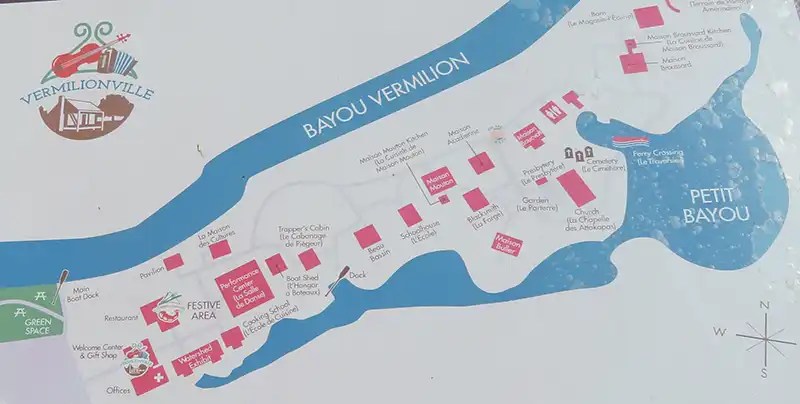
You may see such things as:
- Artifacts such as arrow heads, baskets, and beadwork from the various groups of Native Americans who were the first inhabitants of the area.
- A reconstructed Native American Common Ground, which was a place for cultural events.
- Trapper’s cabin and boat shed.
- School house.
- The Mouton Kitchen, which shows a detached kitchen before the modern age.
- Looms, textiles, and re-enacters creating fabrics.
- A forge and tools.
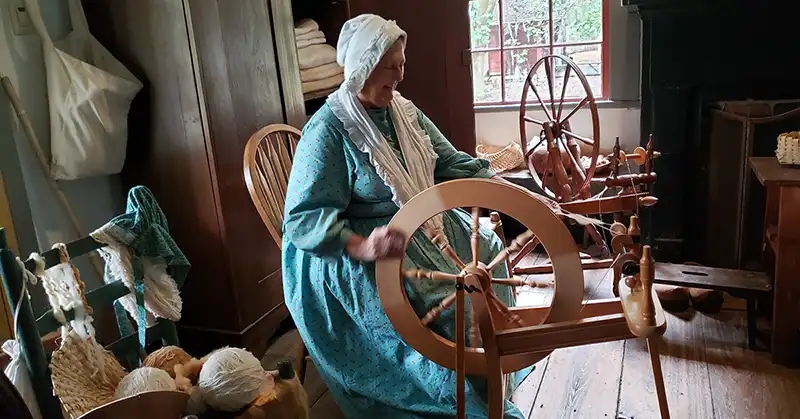
Linda’s Pick of the Exhibits
My favorite part of Vermilionville was the exhibits on the Acadian arrival in Louisiana. As a Canadian, I find the history of the Acadians fascinating.
Acadia (or Acadie) was located in the areas that now make up the Canadian provinces of Nova Scotia, New Brunswick, and Prince Edward Island.
The first settlements were established in 1604 and grew through seven ongoing periods of control switching between France and England. With the constant changes, the culture became unique.
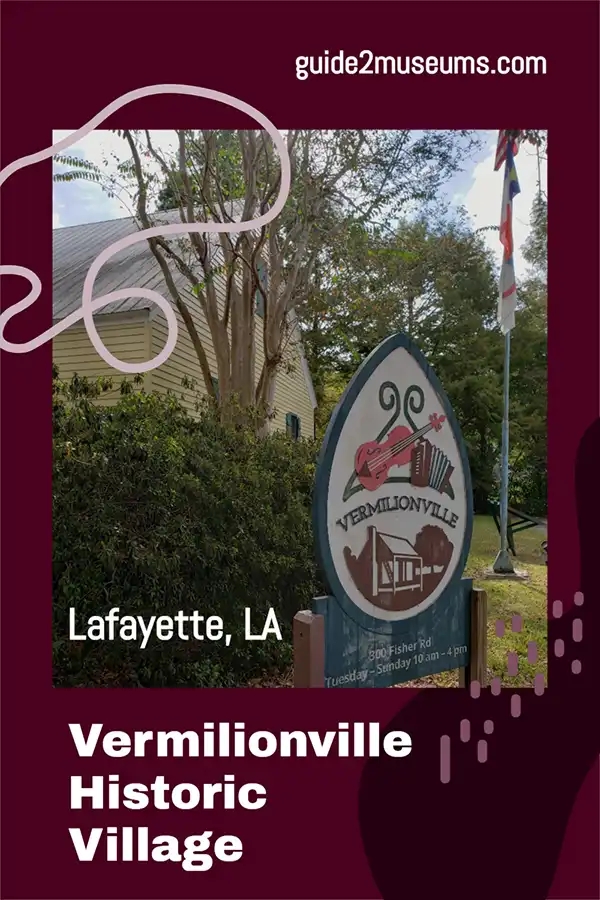
Fast Fact: The deportations of the Acadians from Canada began in 1755. The people were relocated to various parts of North America.
In 1764, Joseph Broussard led a group of Acadians on to Louisiana in the Attakapas region. And from there, the unique Cajun culture grew up on the banks of the bayous.
Linda’s Road Trip Tips

I visited Lafayette for a TBEX travel writing conference, so stayed at the very comfortable Hilton Grden Inn, which was opposite the Cajundome. The location was good, as I was able to walk to everything I needed during my visit.
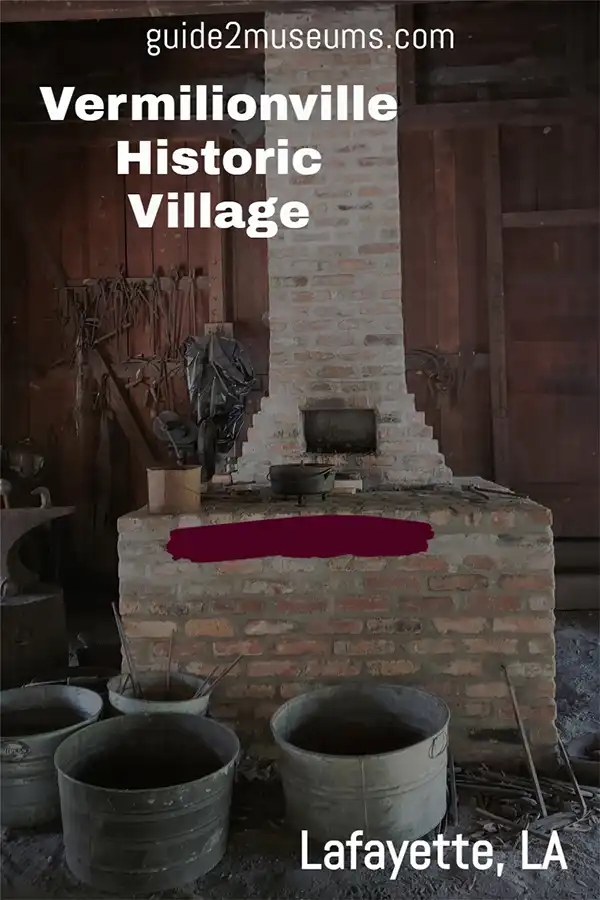
While most of my meals were at the conference, I did walk over to the King Buffet one night for dinner. It provided some delicious seafood, along with traditional Chinese cuisine.
I also enjoyed some local favorites at the Acadian Superette. It serves amazing BBQ options, along with boudin and meats smoked on the premises.
And when it comes to museums, I visited a number of them!
Who Should Visit Vermilionville Historic Village?
Vermilionville Historic Village museum is the perfect destination to learn more about the history of Louisiana. It provides a great blend of informational signs and timelines, collections of artifacts, and interactions with costumed interpreters.
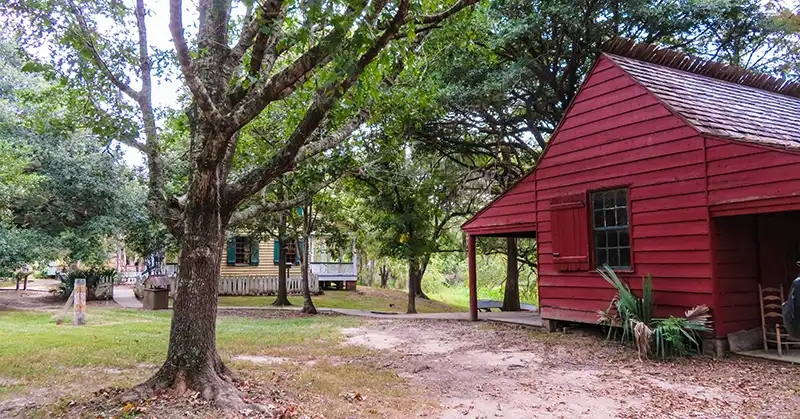
Families will find lots to keep everyone interested. With the spacious surroundings, it’s also a great place for youngsters to burn off some energy. The grounds are flat, so those with mobility issues will find it easy to get around.
Since Vermilionville open air museum is right on the Vermilion Bayou, this historic village also provides an opportunity to enjoy the scenery, take some selfies, and learn more about the bayou.
You can spend an hour or two in Vermilionville to get a quick feel for the area. Or, you can spend half a day or more to talk to check it out more thoroughly.
How Do You Visit Vermilionville Historic Village Museum?
Vermilionville is located at 300 Fisher Road, right in the heart of Lafayette, Louisiana on I-10 and the southern terminus of I-49. It’s across from the Lafayette Regional Airport.
Vermilionville is typically open six days a week, closing on Mondays. Check days and hours to by visiting Vermilionville on the Web.
Keep up-to-date with the Vermilionville Facebook page.
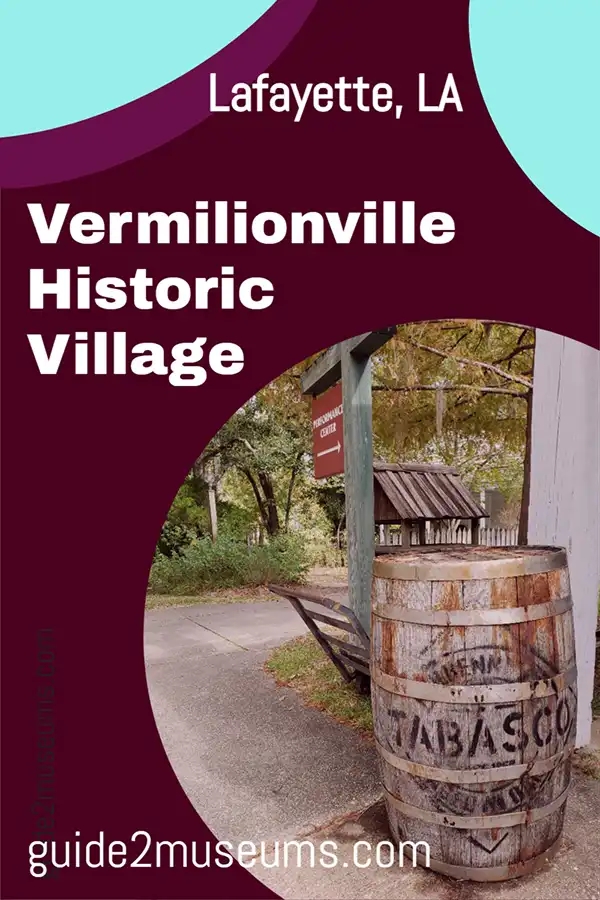
Take a virtual tour of Vermilionville on YouTube.
Plan your visit to Vermilionville with Google maps.
Find More Museums in Louisiana












